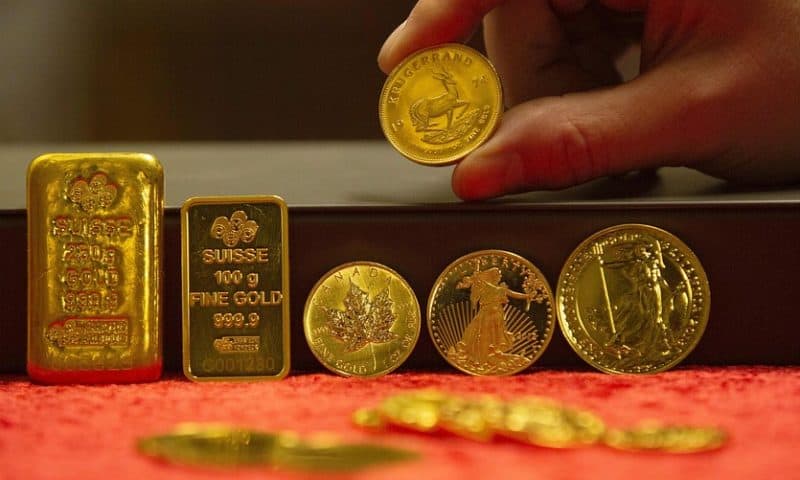U.S. Treasury yields rise, dampening gold demand
Gold futures fell on Tuesday to settle under the psychologically significant $1,500-an-ounce mark, their lowest in five weeks, as a continued rebound by bond yields dulled the metal’s appeal.
“Gold is showing the first signs of stalling out after a relentless summer long rally,” said Stephen Innes, Asia Pacific market strategist at AxiTrader.
Gold for December delivery GCZ19, +0.17% on Comex declined by $11.90, or 0.8%, to settle at $1,499.20 an ounce. That was the first settlement under $1,500, and lowest finish for a most-active contract, since Aug. 6, according to FactSet. Prices also logged a fourth straight session decline.
December silver SIZ19, +0.60% edged up by 1.9 cents, or 0.1%, to $18.186 an ounce.
Concerns about the U.S.-China trade battle appear to have moved to the back burner for investors after being blamed for volatile market action in August. U.S. Treasury Secretary Steven Mnuchin on Monday told Fox Business that he views renewed discussions with Beijing as a sign of good faith.
“As painful as this may sound to gold bulls, it seems the time to start trading gold from the short side might finally be upon us as the U.S.-China trade talks seem to be sinking in,” said Innes.
In the meantime, the day’s “position purge is occurring on the back of higher bond yields and lower equity markets,” he said.
Investors were shunning Treasurys, another traditional haven, with yields on the rise. Gold had rallied in August and early September to hit a string of more-than-six year highs on haven-related flows that lifted the yellow metal and knocked down bond yields. Lower yields are seen as a boon for gold, lowering the opportunity cost of holding the non-yielding metal.
“There was a significant headline premium built into the price at the recent peaks, and some of that remains,” said Brien Lundin, editor of Gold Newsletter, in recent comments to MarketWatch. On Sept. 4, gold futures settled at its highest since April 2013.
“The risk of continued “’good news’ [on the economic front] remains a risk to the gold price, but I continue to believe that the more-sustained monetary issues will support the price over the longer term,” Lundin said. “In any event, I also suspect that there’s more ‘bad news’ around the corner, as investors remain nervous.”
Looking ahead, the European Central Bank is expected to deliver further monetary stimulus when it meets later this week, while the Federal Reserve is widely expected to deliver another interest rate cut when it meets later this month.
Central banks around the world have been upping the gold purchases in 2019 after buying a total of 651.5 tonnes of gold last year — the highest level since 1971, according to the World Gold Council. China’s central bank holdings have increased for the 9th straight month with the PBOC adding 62.4 mln ounces. Russian gold reserves have climbed 42% in the past year and Russia is believed to have the biggest share of gold in its total currency reserves since 2000.
Also on Comex Tuesday, futures prices for palladium posted their first climb in three sessions. December palladium PAZ19, +0.37% rose 1.1% to settle at $1,554.10 an ounce.
Palladium has taken “the lead over gold and platinum as the most precious major metal,” said R. Michael Jones, president and chief executive officer of Platinum Group Metals Ltd. PLG, +5.59% told MarketWatch.
“Real demand to make catalytic converters for the China level 6 [emission] standards is punching through moving prices higher,” he said. “Speculation that palladium moving up was a bubble has been shown to be unfounded.”
In other metals trading, October platinum PLV19, +0.54% lost 1.7% to $936.60 an ounce and December copper HGZ19, +0.10% ended little changed at $2.628 a pound.
Among exchange-traded funds, SPDR Gold Shares GLD, -0.86% edged down by 0.5%.

